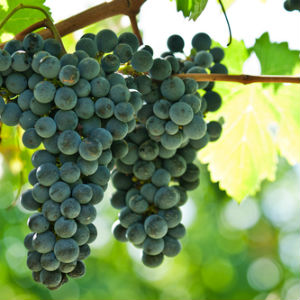“When we first
discovered this piece of land, there was just under 400 hectares in total for
sale” explains Dennis Kerrison. “My original plan was just to buy a very small
part from the owner – about 5 hectares – just to grow a few grapes, but somehow
or other, during negotiations, things changed and I ended up buying most of it
and he now has the 5 hectares!” Doolhof is at the very foot of the Bain’s Kloof
Pass, right at the end of the road. Hence the name ‘Doolhof’ meaning Labyrinth
because once you got in there, the only way out was back the same way you came.
Dennis and his family
bought the farm in 2001 and built their winery three years later. Their first
vintage of Pinotage (produced in 2005) surprised everyone by winning a whole
fistful of awards, and what had been intended as a relaxing sideline for
retirement suddenly turned into a thriving business. They planted a wide
variety of grape varieties – too many for winemaker Friedrich Kühne to turn
into individual wines, so blends are going to be the way of the future. In the
meantime, they are making their name with Malbec – a grape variety originally
from France and now better-known as Argentina’s signature grape.
Malbec is one of the
five major black grapes allowed in the making of Bordeaux red wines but it has
been decreasing in importance, particularly since severe frosts in 1956
devastated the crops, leading many growers to replant with more popular
varieties. It is best known in France now in the Cahors region where it makes
dense, dark, inky-black wines with distinctive aromas of violets and plums. But
at some point during the 19th Century, Malbec made its way to
Argentina and such has been its success there, that it has been adopted as
their national variety.
Malbec is grown in the
highest vineyard sites in the world at Lujan de Cuyo, Mendoza in Argentina where
it produces intense, velvety wines with plenty of power and structure. When
Dennis and his team first planted the variety at Doolhof, they intended it to
be part of a Bordeaux blend, but such was the power of the first vintage in
2007, they decided to bottle it on its own. Since then the variety has gone
from strength to strength, mirroring the Argentinian example and becoming known
as their signature grape.
We tasted three
vintages of Malbec along with some other wines from their range including the
first release of Cabernet Franc. The best white of the day was the rich and
hefty 2008 Signature Chardonnay BF – the BF meaning ‘barrel-fermented’ and not
‘best friend’ although I wouldn’t argue with the latter description too much! Full
of oatmeal and honey with plenty of nutty intensity and a pineapple and cream
finish, it’s available from the farm for R90. The Cabernet Franc 2009 (R115)
has lots of potential – distinctive aromas on the nose of black fruit, green
leaves and some licorice. Soft tannins, black fruit flavours and a clean finish
– a good wine, but not yet the best one they’re going to make from this variety
in my opinion.
And the Malbec? Just
getting better and better. The 2009 (R115) is showing beautiful perfumed
violets and spice with a meaty savoury edge, balanced acidity and fruit,
integrated tannins and a lengthy plummy finish. The 2010 (not yet released) shows
a lot of similarities, but ‘more’ of everything and I would keep it for a year
or four yet. If you feel like enjoying it in decadent surroundings, Doolhof has
recently refurbished Grand Dedale to be the only 5 star property in the
Wellington region and even through the drizzly, grey rain on the day we
visited, it all looked spectacular.
For more information on Doolhof and Grand
Dedale, check out their website

